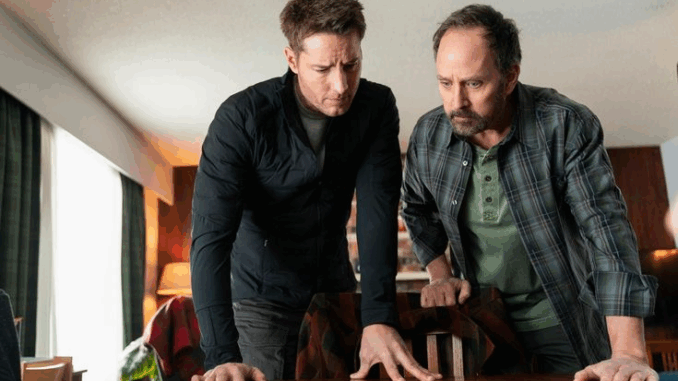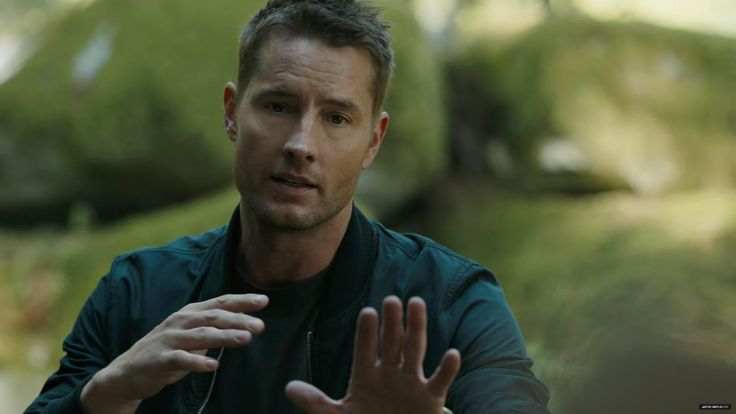
From the Rockies to the Bayou—New Locations, New Challenges
As Tracker continues to dominate CBS ratings, Season 3 is upping the ante with not only deeper character development, but also ambitious production changes. The behind-the-scenes team is pulling out all the stops to expand the world of Colter Shaw, the enigmatic “rewardist” portrayed by Justin Hartley. And the most striking shift? The show’s bold move to shoot in some of the most challenging and breathtaking terrains across North America.
Executive producer Elwood Reid recently revealed that the Tracker production team has gone mobile—filming not just in studio locations but also in remote settings like the Rocky Mountains, Louisiana swamps, coastal Oregon, and even desert regions in Arizona.
“We want the viewer to feel like they’re on the road with Colter,” said Reid. “Every new case takes him somewhere unfamiliar, and that sense of being uprooted needed to come through visually.”
Shooting on location hasn’t just enhanced the authenticity of the show—it’s pushed the crew to its limits. In one particular episode filmed in Alberta, Canada, Hartley reportedly performed scenes in below-freezing temperatures, wading through icy water while tracking a lost teenage hiker. The actor described the experience as “physically brutal but creatively thrilling.”
“It was tough,” Hartley said. “But those conditions put me exactly where Colter would be—cold, tired, and desperate. That emotion reads on screen.”
The Cast Chemistry That Powers the Drama
Beyond the expanding landscapes and dangerous stunts, what gives Tracker its heartbeat is the chemistry among its cast members. While Hartley remains front and center, the ensemble around him is growing stronger—and more important—with each season.
Season 3 gives increased screen time to fan-favorite characters like Bobby Exley (Eric Graise), Reenie Greene (Fiona Rene), and Colter’s occasional ally Teddi Bruin (Robin Weigert). These relationships, while often quirky or tense, form the emotional spine of the show.
According to Graise, the camaraderie viewers see between Bobby and Colter isn’t just acting. “Justin and I hit it off right away,” he said in a May 2025 interview. “He’s got this calm energy on set that makes you feel safe to try new things. That trust bleeds into the work.”
Fiona Rene echoed the sentiment: “We have fun between takes, but we also push each other. Season 3 has scenes where Reenie and Colter really clash—hard. But we can go there because the respect is real.”
Hartley, who also serves as an executive producer, ensures that the cast works as a creative unit. Many of the show’s most emotional scenes are refined on set with input from the actors themselves.
“We rehearse, we workshop, we argue—in a good way,” Hartley said. “I trust this team with my life, because storytelling is about vulnerability, and you need to feel safe to go there.”
Risky Stunts and Real Stakes—How the Action Has Leveled Up

Tracker has always walked the line between procedural and adventure, but Season 3 pushes the action component to new levels. Hartley has confirmed he performed several of his own stunts this year, including high-speed motorcycle chases, cliffside scrambles, and even leaping onto a moving freight train in Episode 5.
“It’s not just about looking cool,” Hartley said. “We want the danger to feel real because that’s Colter’s world. He’s not James Bond—he bleeds, he limps, and he screws up. That’s what makes him human.”
The stunt team behind Tracker, led by veteran coordinator Jason Rodriguez, worked closely with Hartley and the writers to ensure each action sequence served the story. “We don’t do stunts for stunts’ sake,” Rodriguez noted. “Every sequence needs emotional weight. That’s the Tracker rule.”
One standout moment expected to air mid-season involves a tense rappel down a crumbling mineshaft, with Colter attempting to rescue a child trapped below. The scene took four days to shoot and involved a custom-built vertical set rigged with dynamic camera rigs and safety harnesses.
According to production insiders, Season 3’s budget increased by nearly 25% to accommodate these expanded set pieces, practical effects, and travel shoots. CBS is betting big on Tracker becoming a flagship franchise for the network.
The Show’s Growing Cultural Impact
Behind all the action and mystery, Tracker is also earning praise for its themes—self-reliance, mental health, family trauma, and justice. In Season 3, the show is leaning harder into those questions, especially as Colter’s moral compass begins to falter.
“Colter isn’t a traditional hero,” Hartley said. “He makes bad decisions. He shuts people out. But he’s trying—and that effort, that wrestling with yourself—that’s the real story.”
The show has also been recognized for its commitment to inclusion, both on-screen and off. Eric Graise, who is a double amputee, plays Bobby as an integral member of the team—not just a background character. Meanwhile, the writers’ room includes diverse voices to ensure authenticity in the show’s handling of various cultures and regional issues.
As Tracker builds a loyal audience across age groups and demographics, it’s also sparking online discussions about freedom, justice, and the American landscape. Hartley sees that as a sign the show is doing its job.
“We want to entertain, yes,” he said. “But we also want people to ask themselves: What does it mean to run? And what does it take to stop?”
